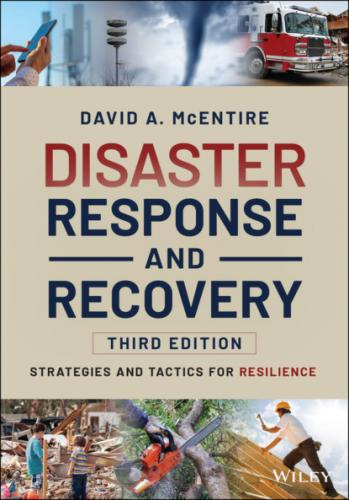ASSESS YOUR UNDERSTANDING
Posttest to evaluate your knowledge of roles and responsibilities of disaster participants.
Measure your learning by comparing pretest and posttest results.
Summary Questions
1 The public sector is subdivision of society made up of ordinary, everyday citizens. True or false?
2 A business would be categorized under the private sector. True or false?
3 An example of a nonprofit organization is a community‐based agency that engages in humanitarian and charitable work. True or false?
4 Mutual aid involves the sharing of first responders or necessary supplies. True or false?
5 Mayors and other elected officials are responsible for declaring a disaster at the local level. True or false?
6 State governments will not become involved in disasters but will simply request assistance from the federal government. True or false?
7 The National Guard may help conduct search and rescue missions or remove debris after a disaster. True or false?
8 FEMA is the only organization at the federal level that gets involved in disaster activities. True or false?
9 Companies may provide donations, but they do not have a bearing on sheltering and construction. True or false?
10 The Salvation Army is a faith‐based organization. True or false?
11 Emergency management is most likely to be successful if all pertinent organizations perform their roles in disasters. True or false?
12 There are no international disaster and emergency management organizations. True or False?
13 Which of the following were involved in the response to the Deepwater Horizon oil spill?Employees of British PetroleumThe Coast GuardLawyers Companies to skim oil and limit environmental damageAll of the above
14 Which is not included in the public sector?A firefighter that is a trained emergency medical technicianA company that supplies first responders with flashlights and batteriesMembers of the city councilA local emergency managerState and federal emergency management offices
15 What department is most likely to be able to assist you with traffic control issues?Public HealthThe coroner’s officeEngineeringThe police departmentDepartment of Housing
16 Which person or entity may call up the National Guard?The governorThe emergency managerA representative from the Red CrossThe mayorAll of the above
17 Which federal agency or department may assist with hazardous material cleanup?General Services AdministrationDepartment of AgricultureThe Environmental Protection AgencyDepartment of LaborTennessee Valley Authority
18 Individuals that help companies recover from disasters are known as:Private contractorsBusiness continuity specialistsCERT membersMembers of emergent groupsNone of the above
19 Under the principle of impartiality, the Red Cross tries to:Help anyone in needServe out of charity and not for profitAct autonomously in each nationProvide assistance without discriminationRemain neutral in armed conflicts
20 A major role of the Red Cross after a disaster is to:Remove debris in the roadsRebuild damaged infrastructureFeed emergency workersShelter victims affected by disasterAnswers c and d
21 CERT stands for:Civilian Emergency Repair TechnicianCommunity Emergency Response TeamCivilian Emergency Response TechnicianCommunity Emergent Recovery TeamCommunity Emergent Recovery Technician
22 An emergent group may be defined as:The pursuit of tasks that are new and unfamiliarSelfless acts of heroismAn organization that appears after a disaster to care for disaster victimsA department
